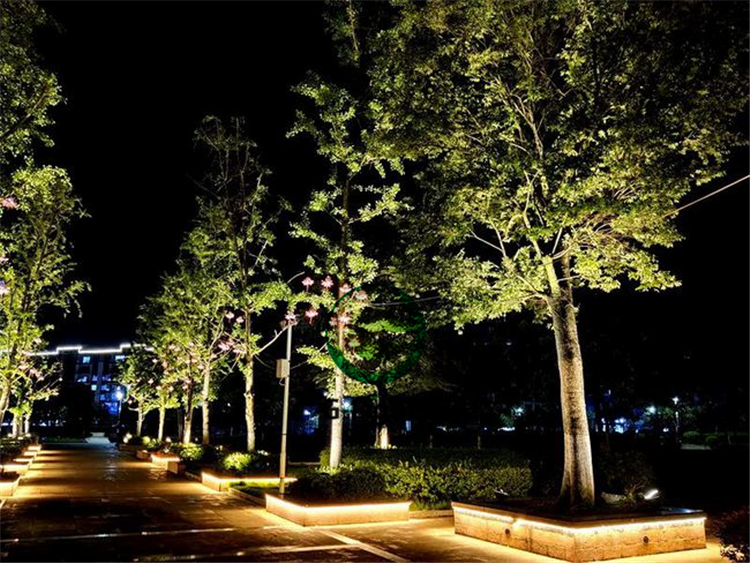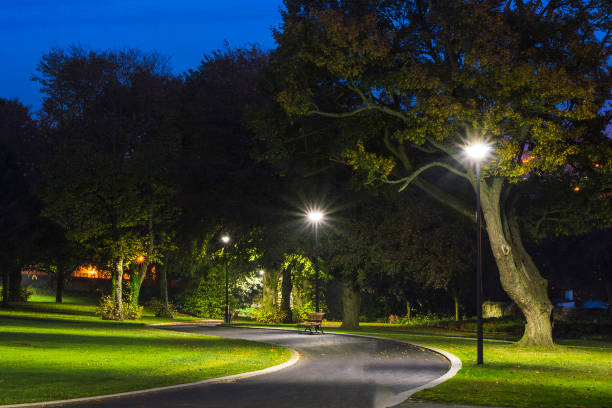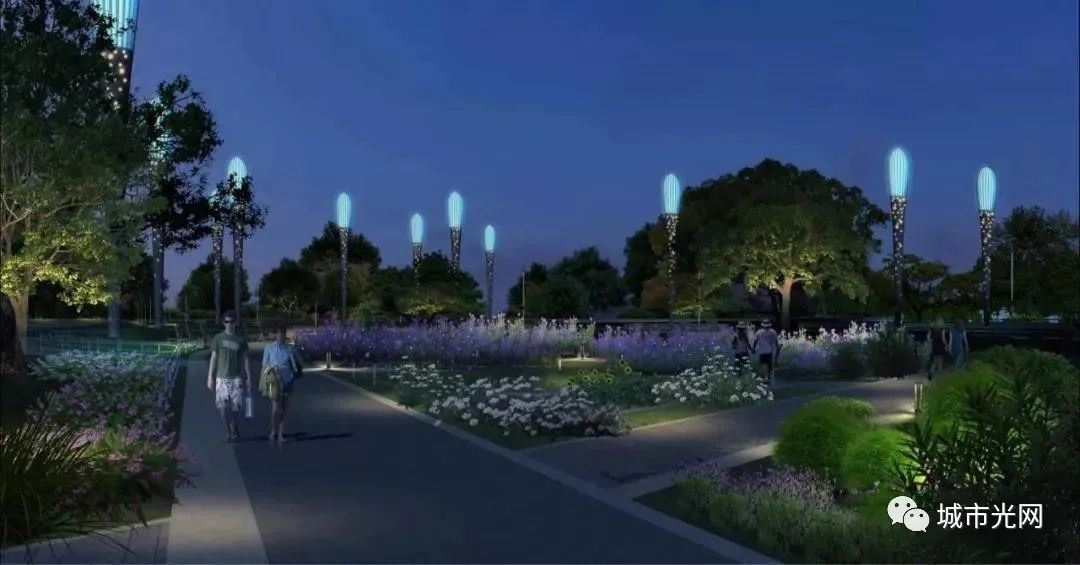The Original Manufacturer Of LED lighting
 RioTinto
RioTinto  2025-12-05
2025-12-05
Consider the functional role
The image of a building should reflect its functionality. For example, government agencies should be more solemn and should not have a commercial atmosphere like shopping malls; residential areas should create a quiet atmosphere; entertainment venues such as dance halls should have a cheerful and lively feeling. Therefore, when using lighting to express the image of a building at night, a corresponding atmosphere and artistic style should be created. The style of the lamp should also consider the style and social and historical background of the object being illuminated.
Consider the finishing material
People's perception of the brightness of an object mainly depends on the intensity of light reflected by the object to the human eye. When the reflectance coefficient of the material surface is very low, or the spectrum that can be reflected by the material surface does not match the projected light color (such as shining green light on a red wall), increasing the luminous flux to increase the brightness often fails to achieve the expected effect and wastes energy. Therefore, the nature of the finishing material cannot be ignored when designing landscape lighting.

Consider key areas
The lighting of key areas should be designed according to their characteristics, which can not only make the key areas stand out but also make them more personalized.
Consider the relationship between the single unit and the whole
Landscape lighting design must have an overall plan to make the whole group have a focus, a foil, a sense of rhythm, and the whole city have style and taste. To achieve this goal, the single unit design should have an overall concept, and the intensity and color of the light should be coordinated with the surrounding environment and the position of the illuminated object in the environment, and meet the requirements of the plan. At present, some units are trying to highlight their own innovations, regardless of the surrounding environment, arbitrarily increase the illumination, and abuse colored light, which is easy to cause waste and destroy the overall effect, which is not allowed. The main management department should put forward requirements and restrictions on each unit according to the plan. The city's night landscape is composed of various landscape elements, which form interrelated relationships, such as the logical relationship and topological relationship between elements, and the relationship between elements and the whole. These relationships cannot be recognized and measured by one model or one type. The characteristic of the urban night scene lighting environment is a large range. The visual range of public observers cannot fully cover the entire city lighting landscape at a certain moment. In terms of forming impressions, the order is that the local precedes the whole, and there is a time difference in forming local impressions and overall feelings. We should fully understand and grasp the relevance and transition relationship of urban landscape elements, and skillfully use the coordinated changes of light, color tone and intensity. The lighting layout should be reasonable, overall coordinated, focused, detailed and concise, and clearly layered.
Consider the color of light
The same light color shines on objects of different colors, and the colors presented are different. In particular, some environments are rich and beautiful in color when viewed during the day, so we should be particularly careful when using colored light projection. In addition, since the light at night is much darker than the light during the day, people's comfort response to light color varies with the basic illumination of the environment. For example, during the day, a large green space gives people a feeling of youth, vitality, and vitality, but at night a piece of green light often creates a gloomy and cold feeling. At the same time, colored light is often projected on a large area on the building, and the size of the color block area has a certain impact on people's psychological response, but the right light color can also enhance the lighting effect, such as projecting different lights on different parts of a building to emphasize the building's layers. Therefore, colored light should be used with caution to prevent color imbalance.

Consider safety and reliability
In the design and construction of landscape lighting, the lighting equipment, electrical equipment, and control systems selected should ensure the maturity and reliability of technology, and pay special attention to safety. Safety means that it will not cause harm to people around or damage the environment. Safety also includes the mechanical strength, electrical, construction, operation, and installation safety of the lamp itself and its distribution device. The layout of lamps should be appropriately concentrated according to the situation, so that the laying of lines can also be relatively concentrated. The location of lamps should be convenient for installation and maintenance. Otherwise, it will be difficult to repair once there is a problem, or safety accidents are likely to occur during the installation and maintenance process. At the same time, we should not only focus on the lighting effect at night and ignore the appearance of the lamps during the day. And pay attention to protection, which includes damage, destruction and loss of lamps by natural disasters, man-made disasters and animals.
Consider glare problems
At night, when strong light is projected within 45° above and below the human line of sight, it will cause glare, making it impossible for people to distinguish objects, affecting walking and viewing, and even causing traffic accidents. Therefore, the direction of light projection should avoid people's sight. On the other hand, it is also necessary to prevent light pollution from affecting people's normal life and work. For example, if it is projected into the room, it will affect rest; if it is projected into the sky, it will affect astronomical observation.
Consider energy saving
There are many ways to illuminate the night landscape. It can be projected from the outside or from the inside. When projecting from the outside, attention should be paid to the position of the lamp during architectural design. Attention should be paid to shortening the optical path and reducing power consumption, while not affecting the appearance during the day. Internal light transmission is more closely related to the architectural design plan. Therefore, the architects of new construction projects should consider these issues in a unified manner.
Consider hierarchical control
It should be preset to be hierarchical control on weekdays or holidays, and there should be complete artistic effects under different control states, so as to save electricity.
Consider ornamentality
If the position, style and color of landscape lighting fixtures are not considered during the day, it will damage the city environment during the day. If it is well considered, it can also enhance the city appearance during the day. The lamp position should be reasonably designed according to the actual situation, and try to see the light but not the lamp. The shape and color of decorative lamps should be ornamental.
